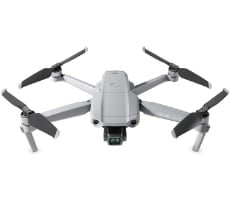Dell XPS 12 Convertible Ultrabook Review
The XPS 12 features machined aluminum edges, Corning Gorilla Glass, and a carbon fiber base and lid to give it durability. Rotating the display in and out of tablet mode is smooth, and the machine has a slight catch to lock the display in place in both configurations. When locked in place, the screen is perfectly flush with the aluminum edges. While rotating the display, you'll notice the frame that surrounds the display is nice and solid.
We found the XPS 12's display to be colorful and vibrant. The 12.5-inch screen supports a 170-degree viewing angle and has an HD resolution of 1920 x 1080. This 400-nit display is brighter than the typical 200-nit panels, making the XPS 12's screen easier to see in brightly lit environments and outdoors too.
The XPS 12 has a full size, chiclet keyboard that's spill resistant. This keyboard is also backlit which is a nice extra if you're frequently working at night or in low-light conditions. The XPS 12 also has a glass integrated touchpad with gesture support. This touchpad is nice and roomy. On some occasions, we accidentally hit the touchpad while typing, thereby moving the mouse. This is annoying but if you don't rest your hands while typing, it shouldn't be a problem. The touchpad is flush with the body of the XPS 12.
One of the advantages of the convertible design used by Dell is the fact that the keyboard is hidden when the XPS 12 is in tablet mode. This design prevents you from accidentally hitting keys in tablet mode, protects the keyboard from accidents, and also gives you a smooth surface to grip when holding the machine.
On the left edge of the XPS 12, you'll find a screen-rotation lock button, headphone/microphone combo port, power switch, and volume controls. Instead of a traditional button that you'd push for power, the XPS 12 uses a sliding switch. The right edge of the machine houses five battery status indicator lights, battery status button, USB 3.0 port with PowerShare, another USB 3.0 port, Mini-DisplayPort, and power adapter port.
Above the display, you'll find two digital array microphones, a camera status light, the camera, and an ambient light sensor located near the center of the machine. Centered below the display is a Windows button.
In an effort to keep the XPS 12 thin and light, Dell was forced to make a few sacrifices. Like most other ultrabooks, the XPS 12 does not have an optical drive. It also lacks an HDMI port and a LAN port.
You won't find a lot of icons and clutter on the default Start screen of Dell's XPS 12. Of course, you can still customize this Start screen to your liking. The default desktop is also free from clutter. That's not to say the XPS 12 doesn't come with a few preinstalled apps, however. Out of the box, you'll find various Dell tools preinstalled including Getting Started, Digital Delivery, Dell Shop, Backup and Recovery, PC Checkup, and others. A trial version of Microsoft Office is also preinstalled on the system.
Dell's Support Center is powered by PC Doctor. This app provides information about the specifications of your exact machine as well as providing various checkup and backup services. The app notified us of BIOS updates, Windows updates, and offered to improve the boot up time of the machine.
When using the XPS 12 in tablet mode, the screen will automatically rotate according to orientation. The accelerometer isn't quite as fast to respond as some smartphones, but it still adjusts reasonably quickly.








